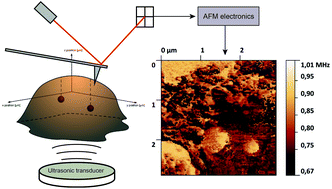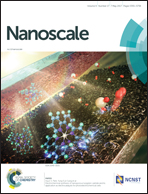Detection of stiff nanoparticles within cellular structures by contact resonance atomic force microscopy subsurface nanomechanical imaging
Abstract
Detecting stiff nanoparticles buried in soft biological matrices by atomic force microscopy (AFM) based techniques represents a new frontier in the field of scanning probe microscopies, originally developed as surface characterization methods. Here we report the detection of stiff (magnetic) nanoparticles (NPs) internalized in cells by using contact resonance AFM (CR-AFM) employed as a potentially non-destructive subsurface characterization tool. Magnetite (Fe3O4) NPs were internalized in microglial cells from cerebral cortices of mouse embryos of 18 days by phagocytosis. Nanomechanical imaging of cells was performed by detecting the contact resonance frequencies (CRFs) of an AFM cantilever held in contact with the sample. Agglomerates of NPs internalized in cells were visualized on the basis of the local increase in the contact stiffness with respect to the surrounding biological matrix. A second AFM-based technique for nanomechanical imaging, i.e., HarmoniX™, as well as magnetic force microscopy and light microscopy were used to confirm the CR-AFM results. Thus, CR-AFM was demonstrated as a promising technique for subsurface imaging of nanomaterials in biological samples.



 Please wait while we load your content...
Please wait while we load your content...